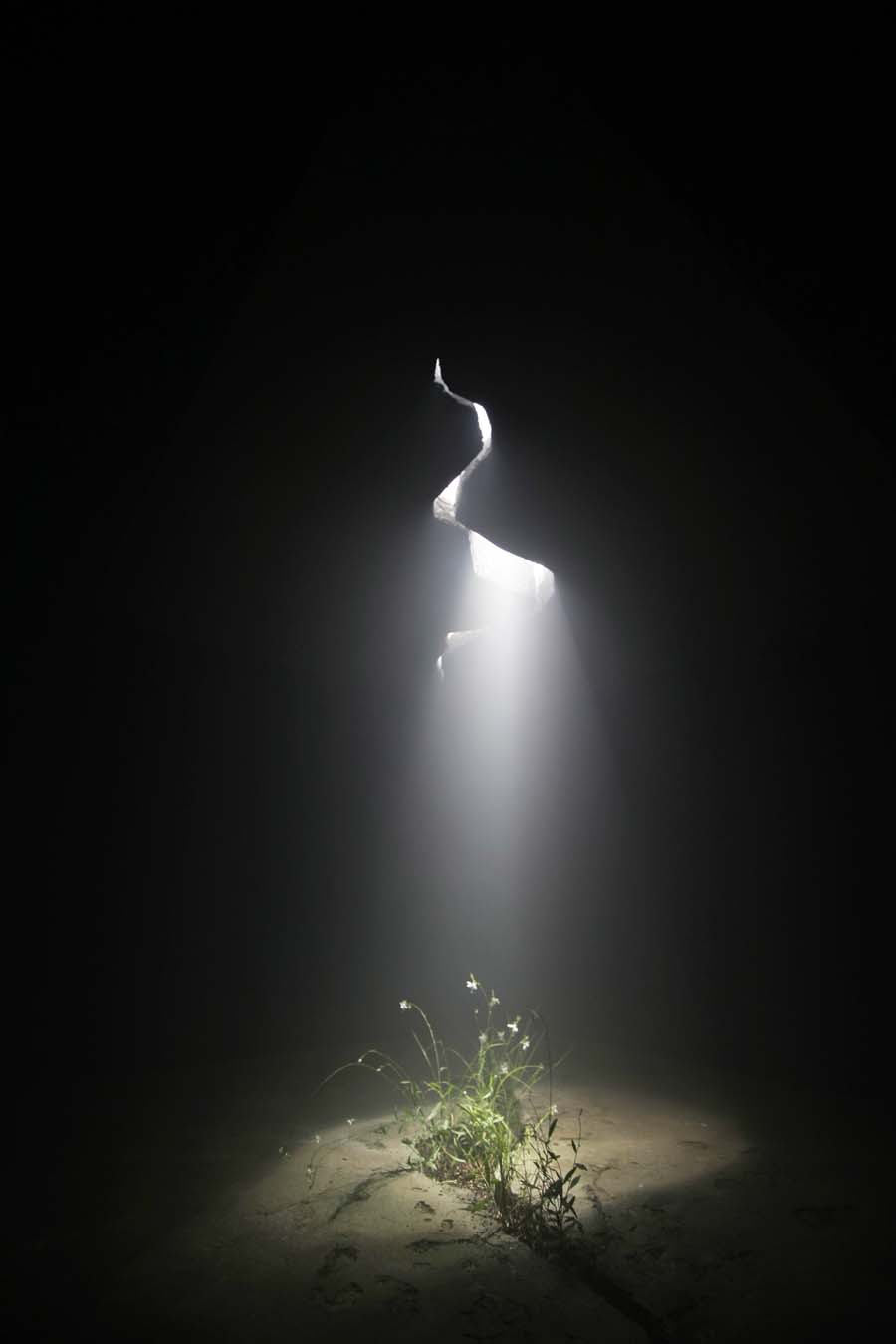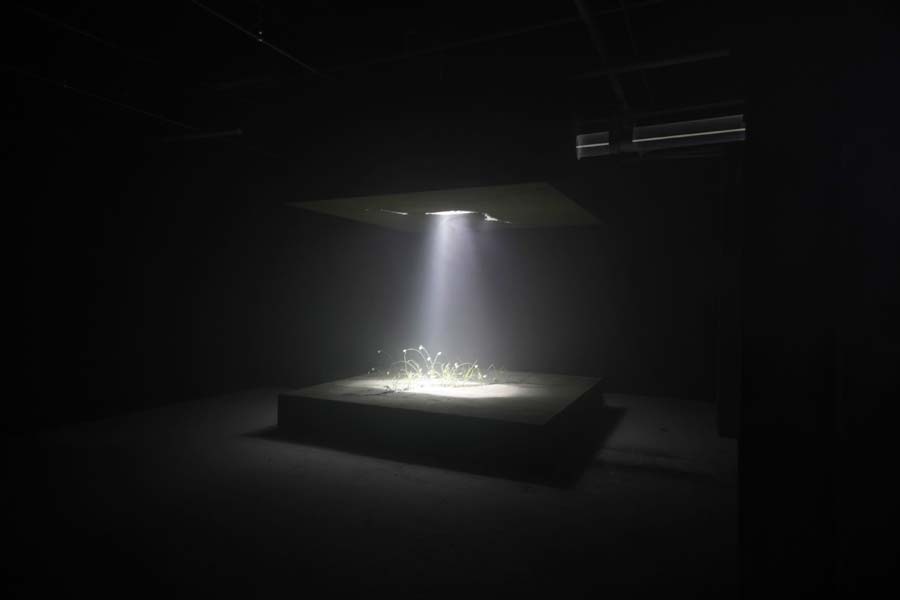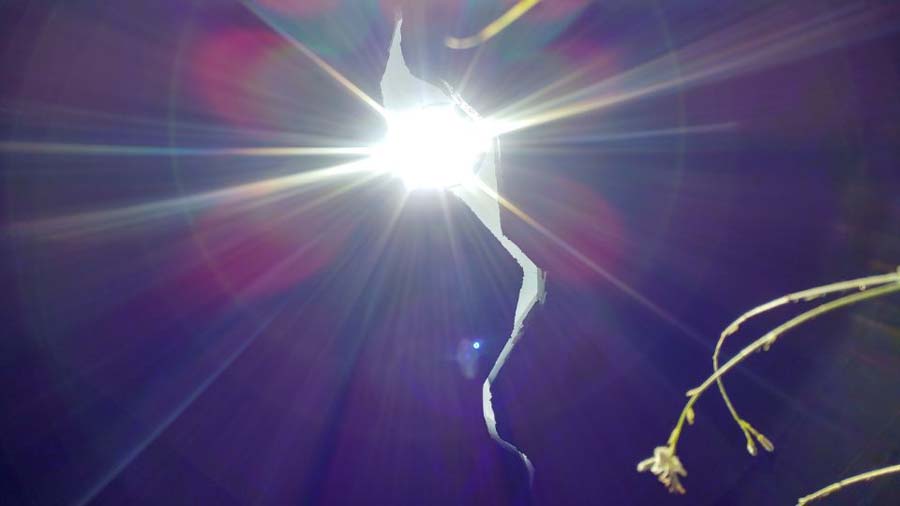
October 23, 2017
RAAD’s Enigmatic Installation at the Seoul Biennale is a Meditation on Time
Firm principal, James Ramsey, employed the same solar technology he is using in New York’s Lowline underground park.

Cultivating plants in a lightless room 20 feet beneath the sidewalks of Seoul doesn’t seem like the most feasible of endeavors. But New York-based RAAD Studio is harnessing the solar technology it has developed for the Lowline, the much anticipated underground park project in the city’s Lower East Side, to bring life to a subterranean space in South Korea’s capital.
Invasive Regeneration, the new exhibit, was created for the 2017 Seoul Biennale of Architecture and Urbanism and aims to expose the civic potential of Seoul’s concealed underground infrastructure, while serving as a meditation on the relationship between time, nature, and the built environment.
RAAD’s architectural intervention, set in a basement, is dreamlike: the space is completely dark save for a single shaft of sunlight beaming down from the ceiling through a jagged fissure. This enigmatic shard of light illuminates a patch of flowering plants, sprouting out of an identical crevice in a concrete slab.
Formally, Invasive Generation is a simple–if not surreal–gesture. But the technology behind it is far more complex. Above ground, a sun-tracking solar reflector, manufactured by South Korean company Sunportal, captures light and channels it underground as a concentrated beam through a system of reflective surfaces and tubes. This ray of sunlight allows the plants to thrive, even deep underground. The same technology is being tested for RAAD’s best-known project, the Lowline, which, funding permitting, will convert a decommissioned subway station into a verdant underground park.

RAAD principal James Ramsey says there are parallels between the Lowline and Seoul’s hidden underbelly, “an anthill of bunkers and weird defensive spaces” created during the Korean war. Ramsey, at the invitation of the municipal government, had already been exploring ways in which to bring the Lowline’s solar technology to to Seoul, but the biennale, with its theme “Imminent Commons,” provided the perfect opportunity to showcase its viability to the public.
“Part of the reason we went to such extremes in building this thing instead of hanging up a bunch of pictures [like in typical exhibitions] is that the site is a 10-minute walk from City Hall in Seoul and we were very interested in communicating that the technology and technique is real and could be used for a lot of purposes,” says Ramsey. Such potential uses include addressing the city’s overcrowding by creating new public amenities and greening the subway system.

Civic ambitions aside, the installation examines the underlying tension between the manmade and the city. Ramsey was inspired, in part, by Alan Weisman’s 2007 book The World Without Us, which considers urban life in hypothetical, post-human world. “In our cities, there are all these vestiges of time on top of each other,” explains Ramsey. “Each of these layers feels like it was built to last all time, but that’s of course not true. Inevitably, nature begins to chew at it and breaks it down to dust.
The project was also a personal one for Ramsey, who lost his two young sons and ex-wife in a plane crash this spring. The installation, inviting viewers to find life in unlikely places, reflects Ramsey’s thought process in the wake of the tragedy. “I wanted to create a piece addressing the nature of time and the ways in which regrowth and renewal are able to happen in the weirdest conditions,” he says, “Something that, of course, is very close to me.”
Invasive Regeneration is on view at the 2017 Seoul Biennale of Architecture and Urbanism through November 5.
You may also enjoy “These ‘Pocket Parks’ Bring Plants Into Overlooked City Corners.”
Recent Viewpoints
Viewpoints
Finding Beauty in Climate Futures







